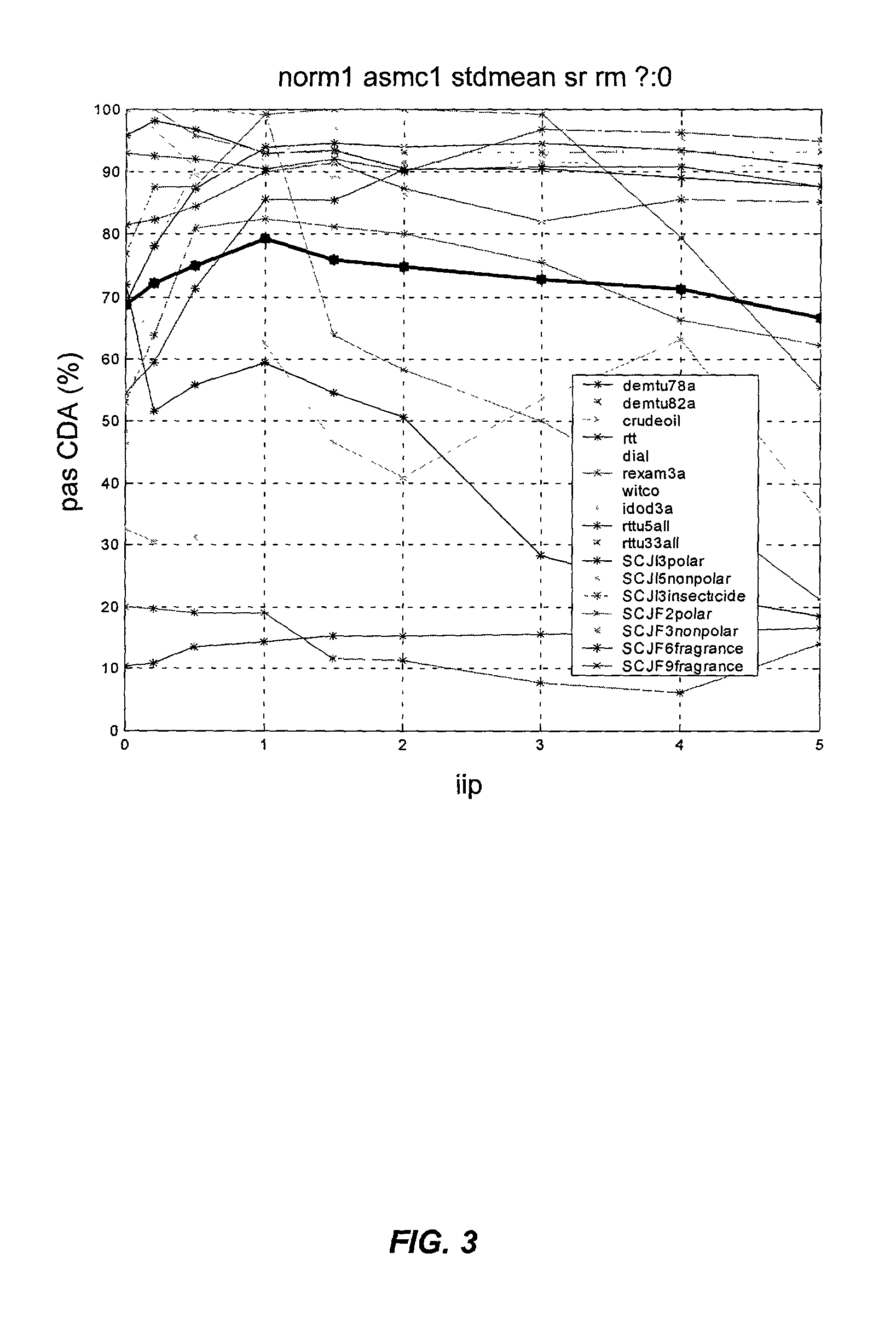Method and system for using a weighted response
- Summary
- Abstract
- Description
- Claims
- Application Information
AI Technical Summary
Benefits of technology
Problems solved by technology
Method used
Image
Examples
example 1
[0117]This example illustrates the effects of importance index weighting on discrimination and prediction capabilities of an “electronic nose”.
[0118]In particular, the experiment was conducted on the CyraNose 320, a portable, hand-held electronic nose developed by Cyrano Sciences, Inc., Pasadena, Calif.
[0119]The Canonical Discriminant Algorithm was selected as the pattern recognition algorithm with normalization set to NORM1 and preprocessing set to autoscaling. The unit was trained with 10 exposures each for the following six analytes:
[0120]
TABLE 1List of Analytes Used in Importance Index Weighting TestClassNumberAnalyte1Ethylene Glycol2Acetic Acid3Water4Isopropyl Alcohol5Acetone6Ethanol
[0121]Two separate methods were created (a method being defined in this example as a configuration on the device and a corresponding training set)—one called WEIGHTED in which importance index weighting was enabled with weighting power set to 1.0, and the other method called UNWEIGHTED in which impo...
example 2
[0136]This example further illustrates the effect of importance index weighting on the performance of “electronic noses”. In particular, it focuses on the effect of raising the importance index to different powers on the discrimination and prediction power of electronic noses.
[0137]This study surveyed 17 CyraNose 320 applications, each of which included a training set and a prediction set (defined as a series of exposures to known analytes that were presented to the device in identification mode to test the device). The results for two key parameters described below were among those evaluated during the study, and illustrated in the figures and graphs following in this document.[0138]Discrimination power is a measure of the separation of analytes in a training set when analyzed with a particular configuration on the C320. Discrimination power is measured by mean interclass distance of the exposures in the training set, in canonical space. A larger mean interclass distance implies a ...
PUM
 Login to View More
Login to View More Abstract
Description
Claims
Application Information
 Login to View More
Login to View More - R&D
- Intellectual Property
- Life Sciences
- Materials
- Tech Scout
- Unparalleled Data Quality
- Higher Quality Content
- 60% Fewer Hallucinations
Browse by: Latest US Patents, China's latest patents, Technical Efficacy Thesaurus, Application Domain, Technology Topic, Popular Technical Reports.
© 2025 PatSnap. All rights reserved.Legal|Privacy policy|Modern Slavery Act Transparency Statement|Sitemap|About US| Contact US: help@patsnap.com



